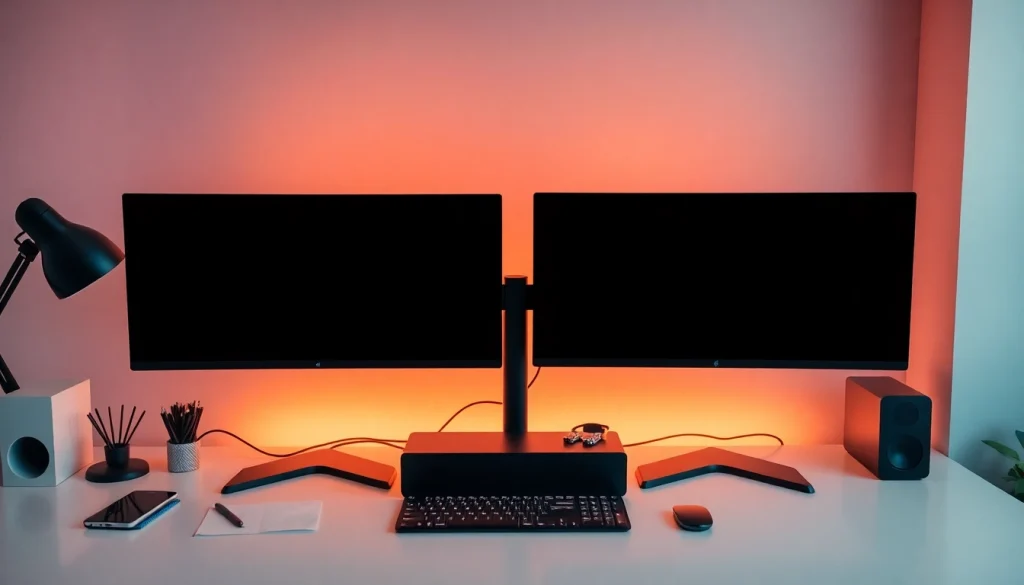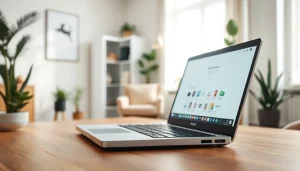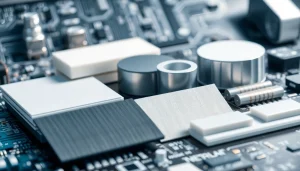Effortless Dual Monitor Install: A Step-by-Step Guide to Boost Your Productivity

Understanding the Benefits of a Dual Monitor Install
In today’s digital environment, maximizing productivity and efficiency is paramount. One effective way to achieve this is through a dual monitor install. Having two screens can significantly extend your workspace, facilitating smoother multitasking and better overall workflow. This section delves into the myriad advantages of setting up dual monitors in both personal and professional contexts.
Increased Productivity and Efficiency
Studies have shown that using dual monitors can increase productivity by up to 20-30%. This significant boost arises from the ability to have multiple applications open simultaneously without needing to switch back and forth between windows. For example, a user can keep their email client open on one screen while working on a document on another. This seamless transition allows for more efficient handling of tasks, thus reducing the time spent searching for information or switching between applications.
Enhanced Multitasking Capabilities
Multitasking has become an integral part of modern work culture. Dual monitors empower users to manage multiple tasks effortlessly. Professionals can have their primary project on one screen while using the other for research, communication, or analytics. This feature is especially useful for industries such as finance, programming, design, and data analysis. The enhanced visibility not only helps in maintaining focus but significantly reduces cognitive load, enabling quicker decision-making processes.
Improved Collaboration and Communication
Collaboration is vital in any industry. Dual monitor setups facilitate better communication, particularly in teams that rely on video conferencing and presentations. Having one monitor dedicated to video calls and the other for notes or slides ensures that professionals remain engaged while accessing necessary information simultaneously. This setup proves beneficial in hybrid work environments, where effective communication can impact overall productivity.
Checking Compatibility for Your Dual Monitor Install
Before embarking on a dual monitor install, it is essential to ensure that your system can support this upgrade. This section outlines the necessary compatibility checks to make the process as smooth as possible.
Assessing Your System Requirements
The first step in any dual monitor setup is to assess your computer’s capabilities. Check the following:
- Graphics Card: Ensure your graphics card has multiple output ports (HDMI, DisplayPort, VGA) suitable for dual monitors.
- Operating System: Ensure your OS (Windows, Mac OS, or Linux) supports multiple displays; most modern systems do.
- RAM and Processing Power: A dual monitor setup can demand more resources, especially with graphic-intensive applications. Ensure your machine meets the recommended specifications.
Identifying Available Ports and Connections
Once you’ve assessed compatibility, identify available video ports on your computer and monitors. Typical options include:
- HDMI
- DisplayPort
- DVI
- VGA
Refer to your computer’s documentation or specifications online to determine which ports are available.
Choosing the Right Monitors for Your Setup
Selecting suitable monitors is critical for a successful dual monitor install. Consider these factors:
- Size and Resolution: Matching sizes and resolutions can create a more unified look and feel.
- Panel Type: IPS panels typically offer better color accuracy and wider viewing angles.
- Adjustability: Monitors with adjustable height, tilt, and rotation can help in aligning screens optimally.
- Refresh Rate: For gaming or graphic design, higher refresh rates can enhance visual performance.
Essential Equipment for a Successful Dual Monitor Install
A successful dual monitor installation requires not just the monitors but also various accessories to ensure effective connectivity and functionality.
Necessary Cables and Accessories
Ensure you have the right cables for your monitors and computer. Possible options include:
- HDMI cables
- DisplayPort cables
- DVI cables
Consider investing in cable management solutions to keep your setup organized and free from clutter.
Monitors and Optimal Specifications
Settle on monitors based on your use case. For gamers, a monitor with a higher refresh rate and lower response time is advisable. For graphic designers, look for accurate color reproduction. Business professionals may prioritize screen real estate, opting for larger monitors or ultrawide screens for multitasking.
Viruses and Malwares Impact on Dual Monitor Setup
It is essential to consider the security of your computers while setting up dual monitors, as malware can affect system performance. Ensure you have updated antivirus software, and conduct regular check-ups to prevent viruses, which can disrupt the dual monitor experience by slowing performance or causing system crashes. Implementing firewalls and being cautious about the software you install can help mitigate these risks.
Step-by-Step Guide for Dual Monitor Install
Having ensured compatibility and acquired the necessary equipment, you can follow these steps to successfully install dual monitors.
Connecting the Monitors
Begin by carefully connecting your monitors to the computer:
- Check the power for both monitors, ensuring they are turned off initially.
- Connect the first monitor to the appropriate port on your graphics card using the necessary cable.
- Connect the second monitor in the same manner to another port.
- Once connected, power on both monitors.
- Finally, boot up your computer, allowing it to recognize the new displays.
Configuring Display Settings
After powering on your computer, you will need to configure your display settings:
- For Windows, right-click on the desktop and select “Display Settings.”
- Here, you should see the configuration options for all connected monitors.
- Select your preferred display arrangement (extended or mirrored view) and adjust the resolution if necessary.
- For macOS, navigate to “System Preferences” and then “Displays” to configure your monitors appropriately.
Troubleshooting Common Issues
Even with the best preparation, issues can arise. Here are common problems and their solutions:
- No Signal: Check that cables are securely connected and that monitors are powered on. Ensure that the correct input source is selected on the monitor.
- Display Not Detected: Right-click on the desktop, navigate to “Display Settings,” and select “Detect.”
- Resolution Issues: If displays appear blurry or distorted, adjust the resolution in the Display Settings to match the monitor’s native resolution.
Adapting Your Workflow with Dual Monitors
Now that you’ve set up dual monitors, it’s time to adapt your workflow for maximum efficiency. This section provides insight on how to optimize your dual monitor experience.
Organizing Your Screen Real Estate
Effectively using the additional screen space is key to maximizing productivity. Some strategies include:
- Designate one screen for primary tasks and the other for secondary applications. For example, code on one screen while referencing documentation on the second.
- Utilize virtual desktops for organized project work—keep different projects open in separate desktops to avoid clutter.
Customizing Monitor Settings for Best Results
Customization options can significantly impact your user experience. Here are some aspects to consider:
- Brightness and Color Settings: Adjust these settings to reduce eye strain, especially during long working hours.
- Screen Positioning: Align monitors for a comfortable viewing angle to minimize neck strain.
Exploring Software Options for Enhanced Functionality
Various software solutions can help you make the most of your dual monitor setup. Here are some worth considering:
- Window management tools like DisplayFusion to enhance how you move and resize windows across monitors.
- Productivity applications such as Trello or Asana on one screen while keeping your email or communication tools open on another.







